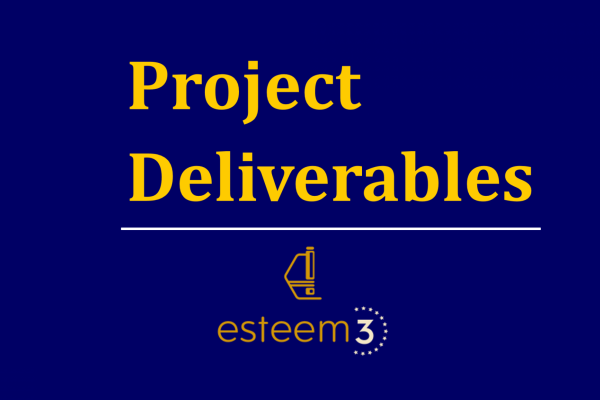Deliverable 4.3 - Report on comparison of precision versus dose for imaging and diffraction methods

Understanding the behavior of materials under electron microscopy is a cornerstone in advancing scientific research. But what happens when the very method used for observation causes damage to the subject of study? Here's a rundown on the latest developments which are highlighted in the Deliverable 4.3 - Report on comparison of precision versus dose for imaging and diffraction methods.
The Challenge
High-resolution electron microscopy is a powerful tool for investigating materials at the atomic level. However, it's application to beam-sensitive materials - such as biological materials, battery materials, nanoparticle catalysts, and polymers - poses a significant challenge due to damage from the electron beam.
The Game Changer: Direct-Electron Detectors
In tackling this problem, direct-electron detectors have been a game-changer. They have a sufficiently high detector quantum efficiency (DQE) that allows the noise in any image or diffraction pattern to be controlled by the finite electron counting statistics. This has paved the way for the development of low-dose methods in high-resolution electron microscopy.
ESTEEM3’s Contribution
The ESTEEM3 programme has been instrumental in evaluating the impact of low-doses on the quantitative interpretation and metrology from a range of techniques. The research themes encompass strain mapping from atomic-resolution imaging, quantitative atom counting with elemental specificity, and the application of low-dose scanning electron diffraction to hybrid perovskite materials.
Precision of Strain Measurement
The project developed methods for measuring lattice distortions in the form of strain by comparing the positions of fitted peaks in an image with a reference lattice. The precision of this method was evaluated as a function of dose.
Atom Counting with Elemental Specificity
ESTEEM3 expanded upon methods for atom counting in single element materials to the quantification of different element types in mixed element systems. An innovative approach was developed to estimate the scaling parameters for the electron dispersive X-ray (EDX) cross-sections of different types of elements, overcoming the challenges of sample thickness and composition.
Scanning Electron Diffraction at Low Doses
Scanning electron diffraction (SED) was employed for studying very beam sensitive materials. Real-space information can be made available at a lower spatial resolution than imaging, making it highly effective for such materials.
Concluding Thoughts
As transmission electron microscope imaging and diffraction data is increasingly viewed as a quantitative rather than qualitative tool, precision and error evaluation become crucial. Technological improvements and post-processing methods have allowed us to reach the fundamental limit to precision, the Poisson noise. This is particularly significant for materials associated with energy storage and conversion processes that require low electron doses.
The remarkable precision achieved in imaging, spectroscopic mapping, and diffraction is a testament to the innovative work of the ESTEEM3 project. Its findings illuminate the potential of electron microscopy to navigate the challenges posed by beam-sensitive materials, and continue to push the boundaries of our understanding.
Stay tuned to our website and social media platforms for more updates on the ESTEEM3 project!
D4.3 Report on comparison of precision versus dose for imaging and diffraction methods [PDF, 1.1 MB, not barrierefree]
